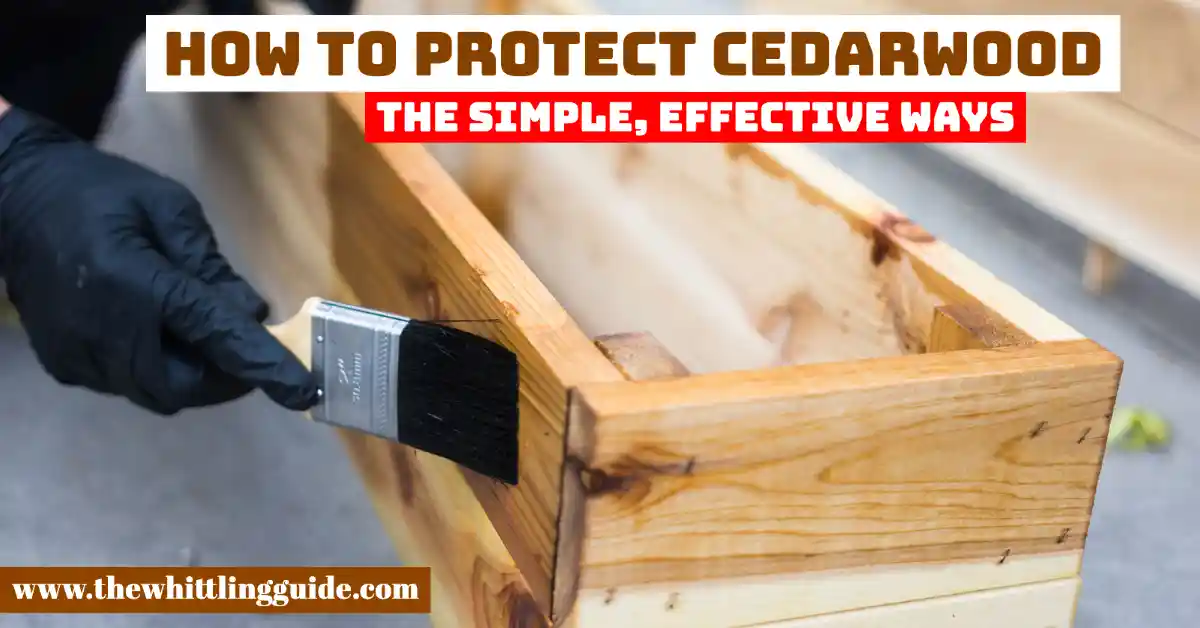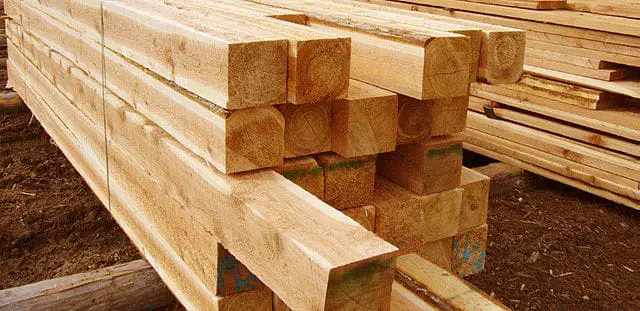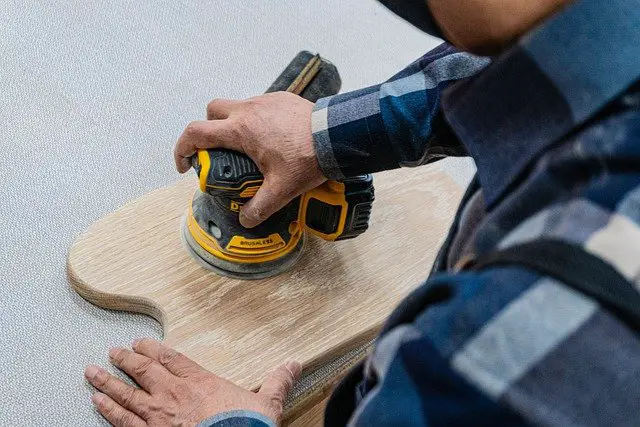
It’s no secret that cedarwood is a durable and beautiful material. Whether you’re using it to build a fence or furniture, it’s important to take the necessary steps to protect your investment. This post will give you some simple, effective ways to protect cedarwood.
Apply a coat of linseed oil
Linseed oil is an excellent way to protect cedar. It is a natural product that helps seal the wood and prevent moisture damage. You can apply it with a brush or cloth and will need to reapply it every few months to maintain protection.
Regularly clean and dust the wood
Cedar is known to attract dust and dirt, so it is important to keep it clean. You can use a damp cloth or a vacuum cleaner with a soft brush attachment to remove dust buildup. You should also dust the wood regularly to prevent dirt and grime from settling on the surface. By taking these steps, you can keep your investment looking great for years to come.
Use a UV-resistant finish
A UV-resistant finish is important if you’re using cedarwood outdoors. There are many products on the market that claim to be UV-resistant, so be sure to do your research before making a purchase.

Sanding
Sanding is a process that you cannot skip whenever you apply a coat, seal, or paint. As you sand the surface, work in the direction of the wood grain. Light sanding makes the wood smooth even when it has a rough texture.
Use medium-grit sandpaper for sanding the furniture. As you rub the surface, rub back and forth, following the grain of the wood. There are dust remainings that you need to get rid of using a lint-free rag.

Make sure you sand the entire surface, and follow up with the fine-grit sandpaper, using the same method. Use a vacuum or a stiff brush to remove all powder and loose debris. Use a tack cloth or a damp cloth to remove any remaining fine powder and rub down all surfaces.
Cleaning
Cleaning Cedarwood involves wiping the surface with a rag, getting rid of the dust. Wiping off the dust is a process that you go through after sanding to maintain a clean finish that lasts longer.
There are cleaning methods that suit the different states of Cedarwood. Old cedar is protected using hot and soapy water to scrub off the dirt and dust. Use a clean cloth for scrubbing. Using a rough piece to scrub increases scratches and sometimes cracks. The wood has to dry before you move on to the next stage.
The process is done for maintenance and for preparing the surface for staining, sealing, or painting. Failure to wash the wood keeps the dirt and oils trapped under the top layers.
Water repellent treatment
Applying waterproof treatment protects the cedar since it becomes water repellent. Before treatment, Cedar absorbs water and causes expansion when the water freezes and the weather changes.
Water repellent treatment reduces the chance of damaging Cedarwood due to rain, soaking, and any other situations that lead to the wetting of the wood. Treatment comes in multiple forms: waterproof sheeting material and an oil-based waterproof clear coat paint. The sheeting material suits small areas, and it is affordable.
It does not take long to apply since it is easy to apply. Oil-based waterproof is ideal for large surface areas such as walls and floors. Applying primer is the first stage when treating Cedar. It gives the first layer to the surface that does not allow water absorption. The type of primer determines the strength of the wood surface.
Waxing
Waxing gives Cedarwood items a good finish and a protective layer. It has been in the market for years since it proved to last long enough for better protection. Wax comes in different forms, and that is liquid and paste.
Both forms of wax are applied in multiple coats if that is your preference. It does not change the color of Cedar, and it depends on the tone of the surface.
When applying wax, use a damp cloth as you spread it over the surface. Let it dry till it becomes hazy. If you are not satisfied with the results, polish the surface. If the wood surface comes with scratches and cracks, the second coat of wax will cover the irregularities.
Coatings
The coating process comes with multiple elements that you choose from. It comes in oil or a stain that gives a final coating to the wood surface. Linseed oil is one of the best coatings that provide your Cedarwood a transparent finish that does not take away the natural look of the wood. A coat of water repellent preservatives is ideal in areas that have moisture, storms, and rain.
However, these do not give your wood UV protection, but they protect your wood from other elements related to soaking and insects. One coat for a water repellent preservative is enough. Follow instructions for drying, and bear in mind that deep-treated wood takes time to dry.
Do not paint before the solvent from the water-repellent preservative has evaporated since that causes the paint to be slow to dry, discolor, or dry with a rough surface. A topcoat is to be applied over the primer. If you choose two coats, allow the first one to cure before applying the second one. Extra time is needed when using in cold weather.
Cedar oil
Cedar oil is known as cedarwood and restores the original state of the wood. It contains 100% of Aromatic Eastern Redcedar wood, which preserves the effectiveness of the wood. It is not only for use on Cedarwood but also works on other wood species.
It increases the life of the wood under harsh conditions. It comes with a natural scent that makes your experience comfortable. Your furniture stays fresh and works well with wax. It restores cedar rings and boards.
Water-based sealers
There is a long list of water-based sealers that work on cedarwood. They prolong the life of structures built from cedar. The sealers have a deep penetration into the wood that gives a smooth finish to the surface.
The grain is left to show, and that preserves and enhances its natural look. There is a need for proper ventilation when you are working. It has to dry before you start using the surface thoroughly.
Ready Seal is a professional type that is easy to apply and maintain. Its beauty does not compromise the quality of the sealers. It may be dark when using, but it changes to its natural color in increasing amounts. There is no need for thinning before application.
UV based sealers
UV-based sealers are also known as fade-resistant sealers. It is a type of sealer that dries quickly before you check on it. The Ultra-violet is curable and capable of staining wood to the extent that it resists stains, acids, and solvents way more than water-based sealers do.
Using UV-based sealers comes with advantages. It cures quickly. Your wood items are returned in no time. They resist numerous harsh elements. They do not produce a smell.
They have no VOCs added, they are applied on surfaces below 0 degrees F and resist temperatures over 200 degrees F, and no UV radiation passes through the sealers. They block the sun and prevent fading or discoloration.
Re-sealing and re-oiling
Cedar is rot and decay-resistant wood that already suits multiple applications, including outdoor and indoor. That makes sealing the wood optional. When you decide to seal, there is a need for re-sealing when it is due.
Since natural elements affect the wood over time, there is a need to re-seal since the seal wears off with time. Oil for Cedar contains natural oils that contain pigment and sometimes not. The oil soaks deeper than some finishes, and that is why it remains an excellent wood conditioner. It also repairs damaged Cedar and does not varnish the surface.
That maintains the natural wood grain and the texture of the wood so that it shows through. Tiny repairs take place unintentionally, and they give a fresh coat. If you are a fan of darker effects, the oil gives you that, at the same time preserving natural pigments that give you long-lasting color.
- Grain and Sheen: Teak Oil versus Danish Oil Uncovered - January 10, 2024
- The Cherry on Top: Crafting the Perfect Cutting Board - January 9, 2024
- Polyurethane Water-Based vs Oil-Based: Choosing the Right Finish - January 8, 2024